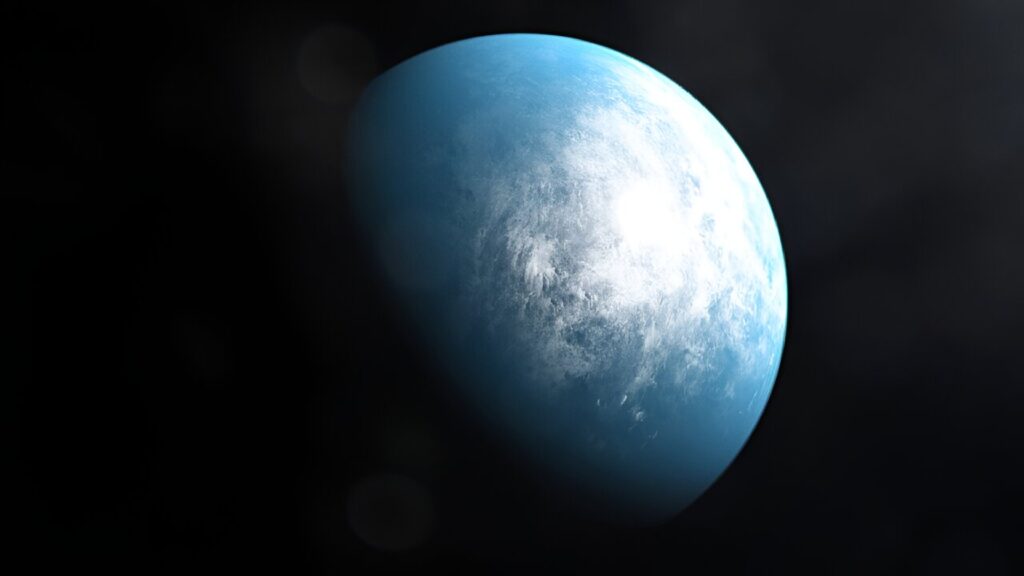The James Webb Space Telescope has helped scientists explore the exoplanet LHS 1140 b, located 48 light-years away. It may not be a mini-Neptune, as previously thought, but an Earth-like oceanic world.

An oceanic world near our solar system
According to scientists using the James Webb Space Telescope, a planet located relatively close to Earth may be the first ever discovered planet with a potentially habitable liquid ocean outside the Solar System.
To date, more than 5,000 planets have been discovered outside the solar system, but only a few of them are located in the so-called “Goldilocks zone.” They are not too hot, not too cold, and may contain liquid water, a key component for life.
The exoplanet LHS 1140 b is one of the few in this habitable zone and has been closely studied since it was first discovered in 2017.
It is located 48 light-years from Earth, which is more than 450 trillion kilometers away, which is relatively close in the vastness of space. The exoplanet was believed to be a small gas giant, a so-called mini-Neptune, with an atmosphere too rich in hydrogen and helium to support life. However, new observations from the James Webb telescope have confirmed that the exoplanet is actually a rocky super-Earth. According to a study published on Wednesday in The Astrophysical Journal Letters, it is 1.7 times larger than Earth but has 5.6 times more mass.
The best choice for the ocean world
James Webb was able to analyze the planet’s atmosphere as it passed in front of its star. No signs of hydrogen or helium were detected, which eliminated the possibility that the planet is a mini-Neptune.
“The density of the planet indicates that it actually has a large amount of water,” said study co-author Martin Turbe of the French research center CNRS. “It could be a really huge amount of water. After all, the entire content of the Earth’s oceans is only 0.02 percent of its mass.
Whether this water will be in liquid or ice form depends on the planet’s atmosphere.
Lead author of the study Charles Cadieux, a graduate student at the University of Montreal, said: “Of all the temperate exoplanets known to date, LHS 1140 b may well be our best chance to indirectly confirm the presence of liquid water on the surface of an alien world.”
On the positive side, the planet is gently warmed by its red dwarf star, which is one-fifth the size of the Sun. According to Turbe, the exoplanet’s surface temperature should be quite similar to that of the Earth and the Martian surface.
The surface of the planet LHS 1140 b
One of the versions is that the planet’s surface is covered mainly with ice, but there is a huge ocean of liquid water underneath. Under the influence of radiation from the star, it can be freed from ice.
As the modeling showed, a spot of pure water could have a diameter of 4000 km, which is about half the surface area of the Atlantic Ocean. Or liquid water could be hidden under a thick ice shell, as on the satellites Ganymede, Enceladus, or Europa, which orbit Jupiter and Saturn.
The James Webb instrument has detected signs that point to the presence of nitrogen, Cadieux said, adding that more research is needed to confirm this conclusion.
Nitrogen is found everywhere on Earth and is considered another potential ingredient for life. The researchers hope to gain a few more hours of precious James Webb operating time to learn more about LHS 1140 b.
The researchers estimate that it will take at least a year to confirm whether the exoplanet has an atmosphere and another two to three years to detect the presence of carbon dioxide.
Based on materials from phys.org

